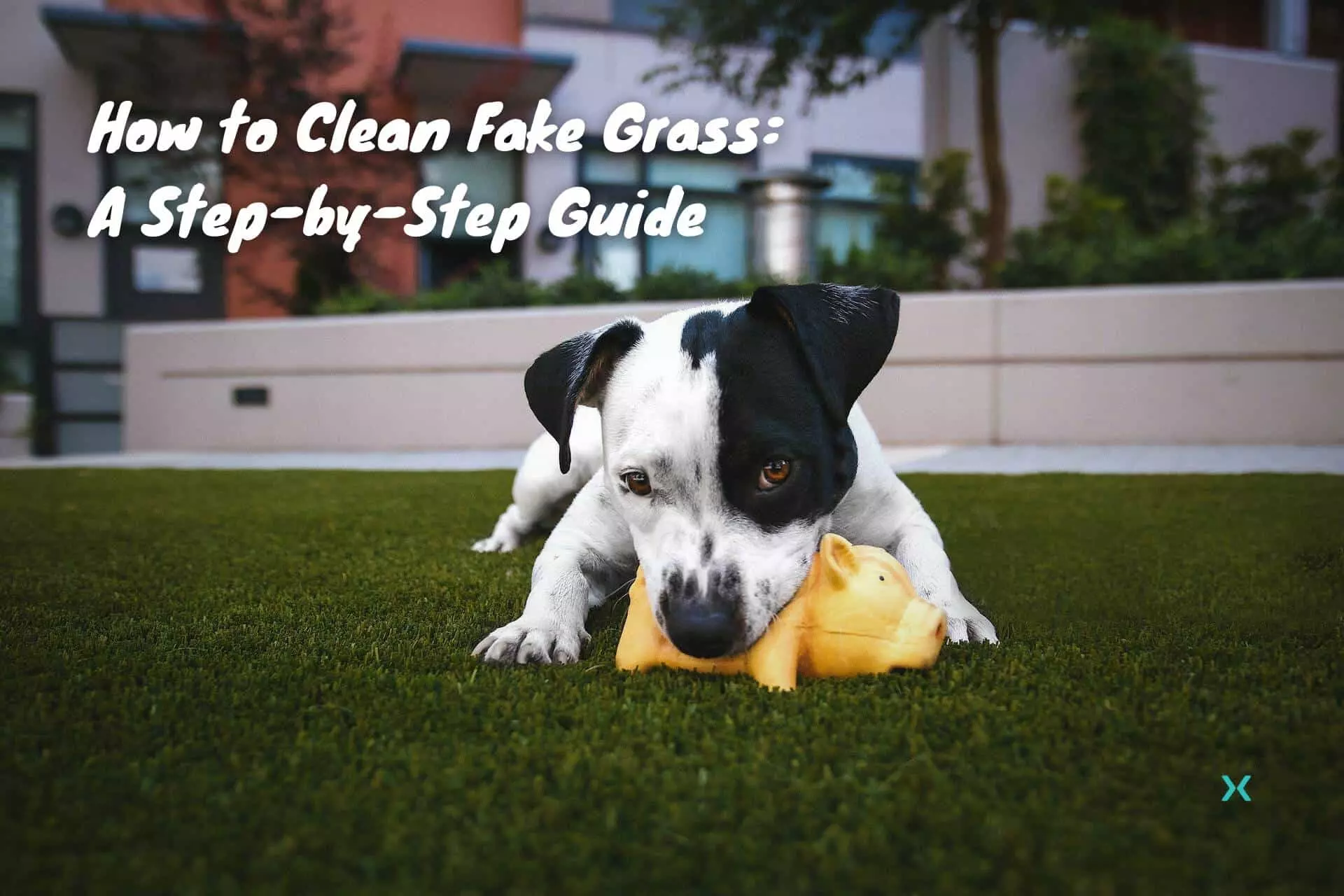⭐ How to Clean Fake Grass: A Step-by-Step Guide
A backyard with lush and green grass can make any homeowner feel proud. What’s not to love about the look and feel of vegetation underfoot?
However, maintaining natural grass is not only time-consuming but also expensive. Irrigation needs, fertilization, and regular mowing can take up much of your time. No wonder many homeowners opt for artificial grass instead, also known as artificial turf.
In the past, artificial turf was common in sports fields, but technological advancements have made it possible to create artificial grass that is eco-friendly and perfect for residential use.
Cleaning synthetic turf is not as labor-intensive as natural grass but requires at least monthly artificial grass maintenance to stay in good condition. In this guide, we’ll provide step-by-step instructions on how to clean artificial grass.
Table of Contents
⭐ Understanding Artificial Grass Maintenance
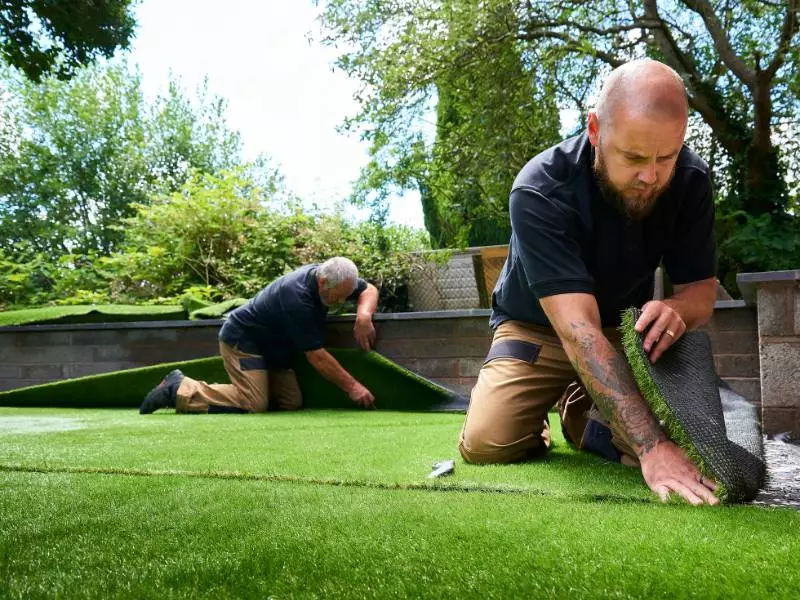
Before we delve into the cleaning process to maintain artificial grass, it’s essential to understand the importance of maintaining your artificial turf.
Artificial grass may not attract pests or diseases because it’s not a living organism.
However, debris and soil particles can get trapped in the fibers, causing it to look dull or even produce an unpleasant odor.
Therefore, removing debris, dirt, and pet waste is crucial to maintain the synthetic grass’s cleanliness and appearance.
But did you know that maintaining your artificial turf goes beyond just keeping it clean?
Regular maintenance can also help extend its lifespan and ensure it stays in good condition for years.
This means you won’t have to worry about replacing it anytime soon, saving you money in the long run.
🧹 The Importance of Regular Cleaning
Artificial turf needs regular cleaning, just like any other outdoor surface.
Don’t wait until you see mold or mildew growing on your fake grass before you take action to clean artificial turf.
Regular cleaning helps you combat algae, fungi, and bacteria growth, which can impact the air quality around you, leading to respiratory problems if left unchecked.
Regular cleaning can also prevent dust and pollen buildup, which can trigger allergies and other respiratory issues.
Keeping your artificial turf clean ensures you and your family can enjoy your outdoor space without worrying about any health hazards.
🧹 Tools and Equipment Needed for Cleaning
You don’t need expensive tools and equipment to clean artificial grass.
A broom, garden hose, and detergent solution are enough for a thorough cleaning.
In addition, synthetic grass is designed to withstand harsh weather conditions, so you won’t have to worry about damaging the fibers during cleaning.
However, to make cleaning even easier, you can invest in a leaf blower to remove any loose debris before cleaning artificial grass.
This can save you time and effort, especially if you have a large area of synthetic turf to maintain.
It’s also important to note that using the right cleaning products is crucial to maintaining your artificial turf’s quality.
Avoid using harsh chemicals or bleach to clean artificial grass, as these can damage the fibers and cause discoloration.
Instead, opt for mild soap or detergent solutions safe for synthetic grass.
Following these simple lawn maintenance tips ensures that your artificial turf stays in top condition for years.
Not only will it look great, but it will also provide a safe and healthy outdoor space for you and your family to enjoy.
🧰 Step 1: Clearing Debris from Your Artificial Grass
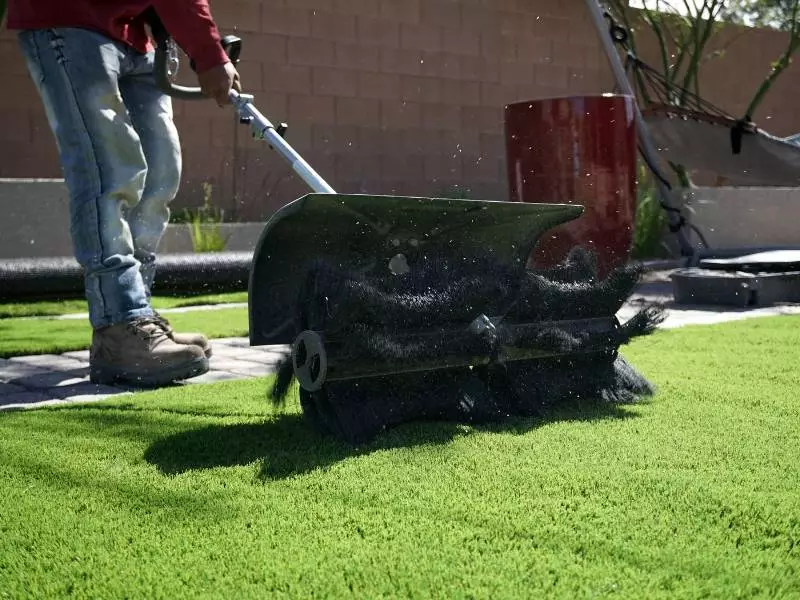
Artificial turf is a low-maintenance alternative to natural grass, but it still requires some upkeep to keep it looking its best.
In this guide, we’ll walk you through the ways to clean artificial grass and keep it in tip top condition.
🧹 Removing Leaves and Twigs
The first step in cleaning your artificial turf is removing any debris, such as leaves, twigs, and rocks, on the surface.
This is important because debris can trap moisture and cause mold or mildew to grow on your artificial grass.
Next, use a rake to clear any larger debris, then use a leaf blower or a broom to sweep away smaller debris.
Pay special attention to areas where debris collects, such as around trees or corners.
🧹 Dealing with Pet Waste
If you have pets, cleaning their solid waste is a part of maintaining your artificial turf.
Use a poop scooper or a plastic bag to dispose of the trash.
In addition, be sure to regularly clean any areas where your pets frequently go to the bathroom to prevent odors and discoloration of the fake grass.
You can also use a pet odor neutralizer to eliminate any lingering smells.
It’s important to note that some artificial grass cleaner turf types are designed specifically for pet use and have additional features to make cleaning easier.
For example, some fake grass products have antimicrobial properties to prevent the growth of bacteria and reduce odors.
🧹 Brushing Your Artificial Grass
Over time, grass can become flattened and matted down, especially in high-traffic areas.
Use a stiff-bristled brush to fluff up the fibers to keep your artificial turf looking its best.
This will also help to distribute infill (if your fake grass has it) evenly throughout the turf.
Brushing your artificial grass at least once a month is recommended, but more frequent brushing may be necessary in areas with heavy foot traffic or if you have pets.
🧹 Rinsing Your Artificial Grass
Occasionally, you may need to rinse your artificial grass to remove dust or dirt buildup.
To do this, use a garden hose with a gentle spray nozzle to wet down the turf.
Avoid using a high-pressure washer, which can damage the fibers or displace the infill.
If you notice any stains on your artificial grass, you can spot-clean artificial grass with water and mild detergent.
Rinse the area thoroughly after cleaning to remove any soap residue.
Following these steps, you can keep your artificial turf looking beautiful and extend its lifespan.
With proper care, your artificial grass will provide a low-maintenance, high-quality alternative to natural grass for years.
🧰 Step 2: Cleaning the Surface
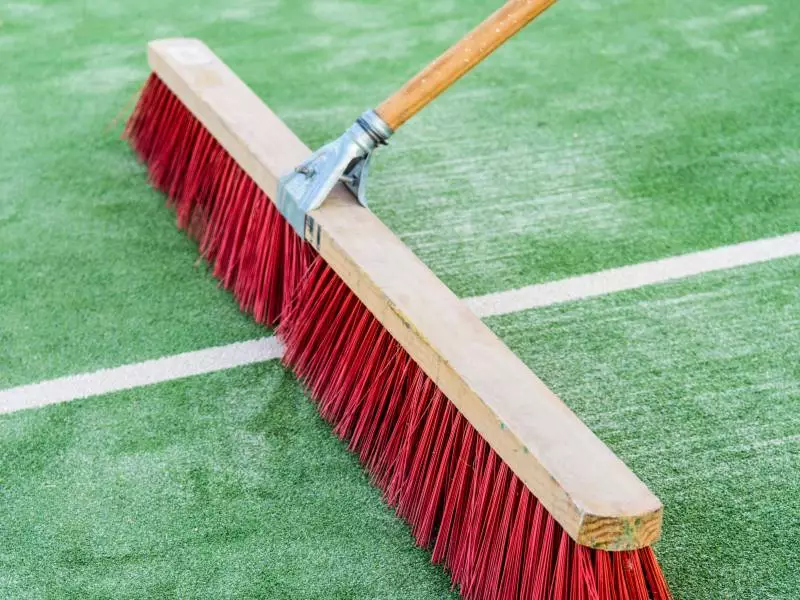
🧹 Using a Stiff Bristle Broom
Once you’ve removed the debris, use a stiff bristle broom to dislodge any other dirt, debris, or dust particles that may be stuck between the fibers.
Use strategic sweeping motions to allow you to clean all areas of the fake grass.
🧹 Applying a Mild Detergent Solution
A mild detergent solution effectively cleans tough stains and spills that may be on your artificial grass.
Mix a gentle soap with warm water and pour it onto the stained area.
Allow the cleaning solution to sit briefly before scrubbing the dirt with a soft brush.
Rinse the area with a hose and repeat the process if necessary.
🧹 Tackling Stains and Spills
If you accidentally spill any food or beverages on your artificial grass, clean it up immediately.
The longer a spill sits, the harder it will be to clean.
Use a damp cloth or paper towel to blot the affected area, then use a detergent solution for a deeper clean.
🧰 Step 3: Rinsing and Drying Your Fake Grass
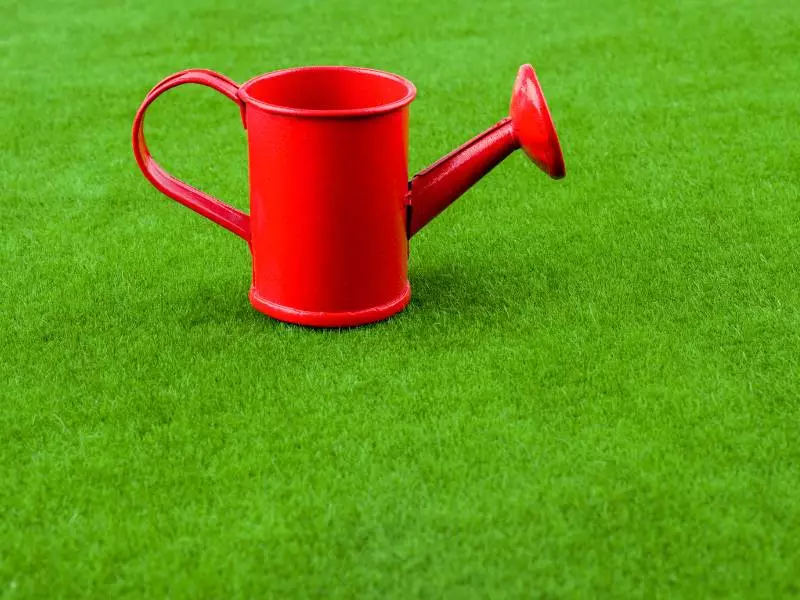
🧹 Using a Garden Hose or Pressure Washer
Now that you’ve completed the first two steps of cleaning your artificial grass, it’s time to move on to rinsing and drying your fake grass.
Rinsing your synthetic turf with vinegar and water is essential to maintain its integrity and keep it looking fresh and new.
Using a garden hose or pressure washer, slowly rinse the surface of your artificial grass lawn turf, ensuring you reach every area.
Adjusting the water pressure depending on the dirt and stains on your synthetic grass is crucial.
If you have stubborn stains or dirt, you may need a mild detergent or soap to help remove them.
When rinsing your artificial grass, be careful not to damage the grass blades or the infill.
You want to use a gentle stream of water that won’t cause any harm to your lawn.
🧹 Ensuring Proper Drainage
After rinsing your artificial grass, it’s essential to ensure the water drains correctly.
Proper drainage prevents mold and bacteria buildup on your synthetic grass.
Check that your lawn has adequate drainage, and if necessary, use a squeegee to remove any excess water.
In addition, you want to ensure that your artificial grass is as dry as possible to prevent any moisture from becoming trapped under the surface.
It’s also a good idea to check your yard’s drainage system to ensure it’s functioning correctly.
If you notice any drainage issues, you may need to contact a professional to help you fix the problem.
Overall, rinsing and drying your fake grass is a crucial step in maintaining the longevity and appearance of your artificial grass.
Following these simple steps can keep your artificial lawn looking beautiful and healthy for years.
🧰 Step 4: Maintaining the Grass Fibers
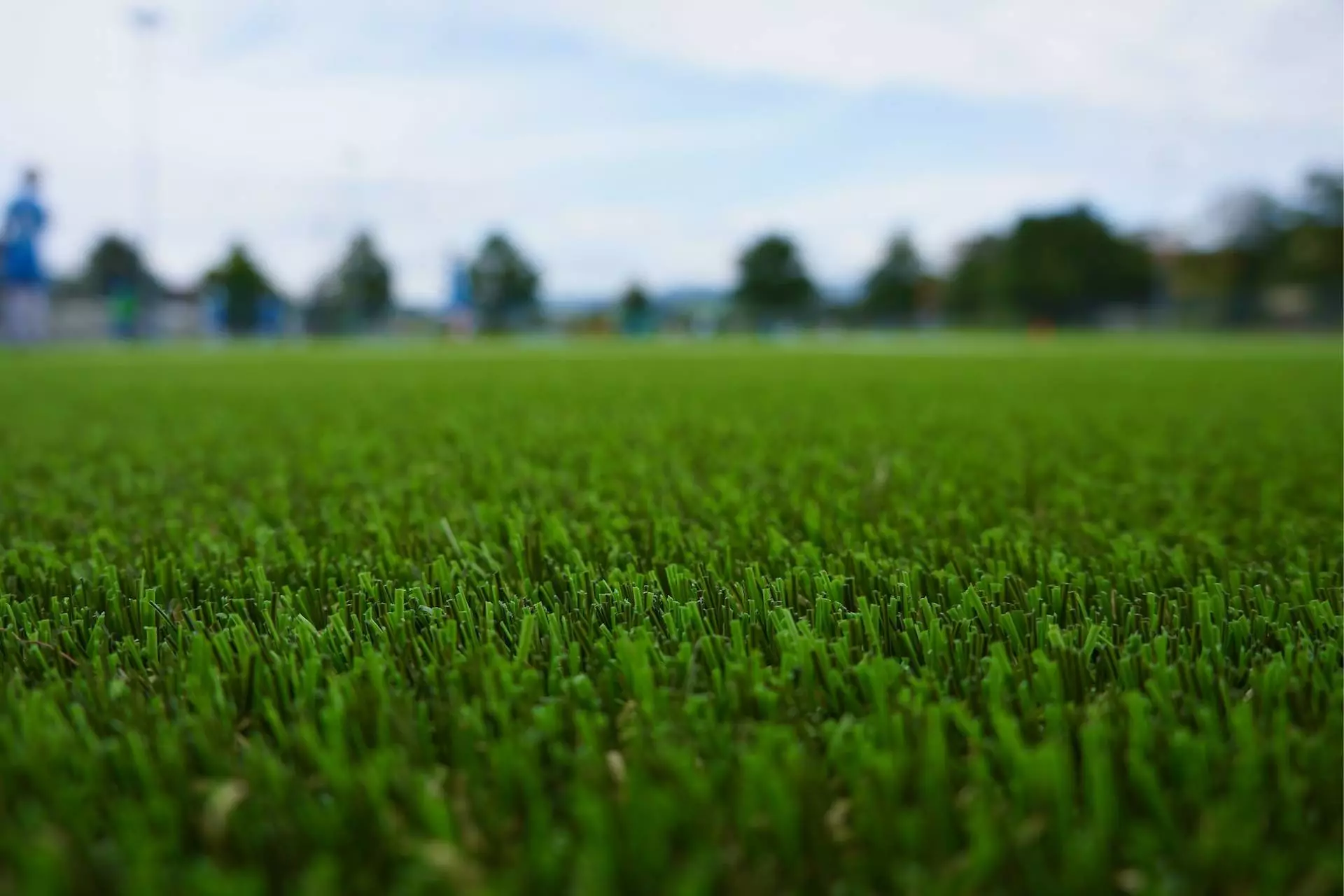
🧹 Brushing the Fibers Regularly
Regularly brushing the fibers of your artificial grass will help prevent flat and matted areas.
Use a stiff bristle broom to fluff up the artificial grass fibers, and brush the fibers in multiple directions.
This process will help make your synthetic grass look more natural and realistic.
🧹 Addressing Flattened or Matted Areas
If you notice areas of matted or flattened fibers on your synthetic turf, use a stiff brush to fluff up the threads.
Alternatively, use a specialized turf rake to lift the fibers. Brush the area vigorously, and the fibers eventually return to their original upright position.
⭐ Final Thoughts
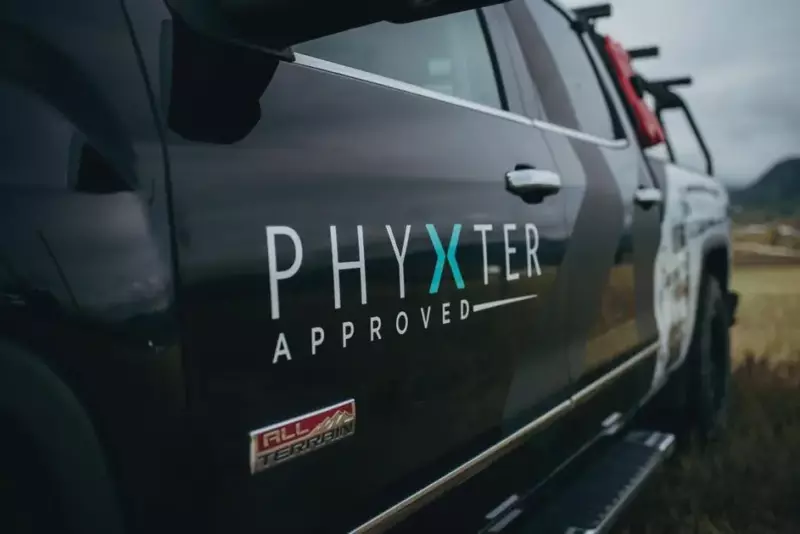
Cleaning your artificial grass regularly is essential to maintain its appearance and longevity.
With these four steps, you can keep your synthetic grass looking lush and vibrant all year round.
Discover a wealth of knowledge about your home with our selection of homeowner articles. Dive in and explore to take your home to the next level.

